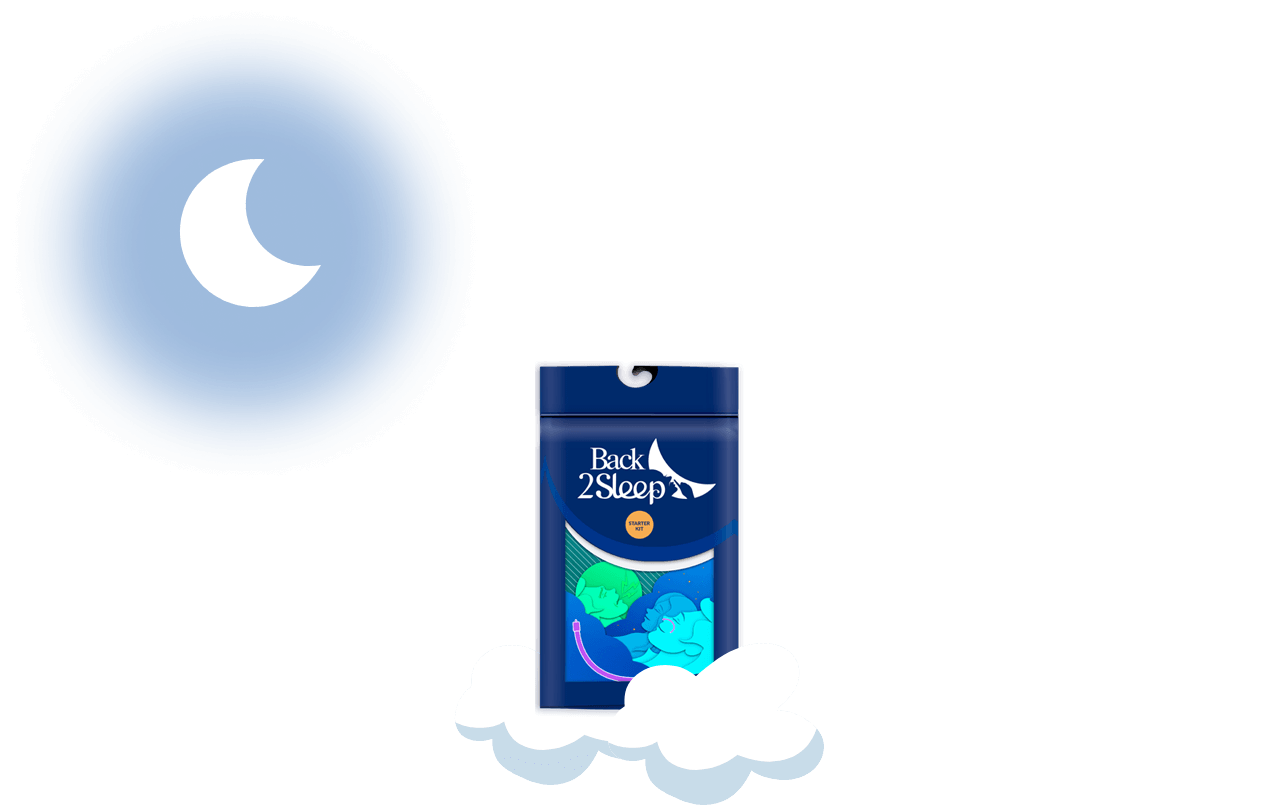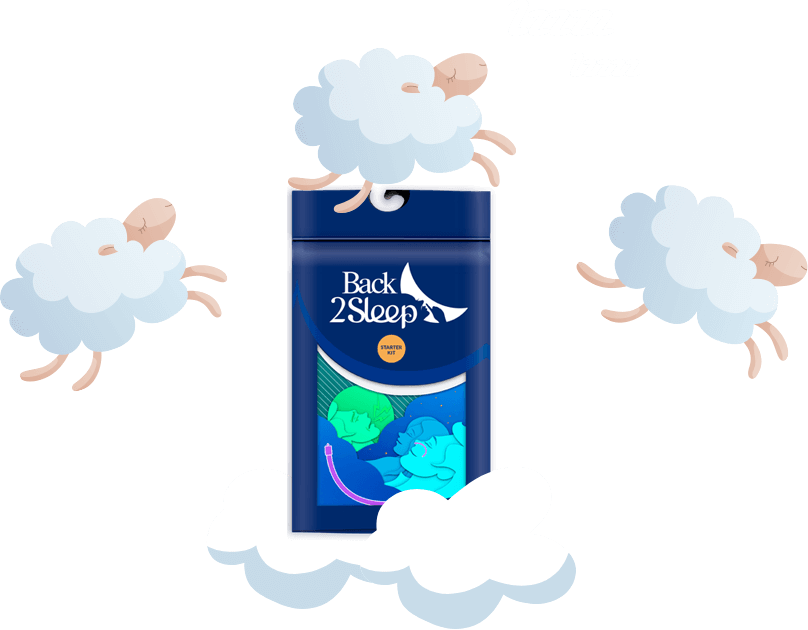How to Stop Snoring: 5 Proven Solutions for Peaceful Sleep Tonight
Transform your bedroom from a noise factory into a tranquil sanctuary with these clinically-backed solutions that deliver immediate results
If snoring has transformed your peaceful bedroom into a nightly concert of disruptive sounds, you're not alone—nearly 90 million Americans snore regularly, affecting not only their own sleep quality but also their partners' rest and relationship harmony. Whether you're the person creating the symphony or desperately trying to sleep through it, this persistent issue demands effective solutions, not just tolerance. The encouraging news? Modern science offers multiple proven interventions that can silence snoring permanently, from simple lifestyle adjustments to innovative medical devices that work from the very first night. This comprehensive guide unveils five powerful solutions backed by clinical research and real-world success stories, helping you reclaim the restorative, peaceful sleep you deserve.

Critical Fact: Research shows that 75% of people who snore have some degree of obstructive sleep apnea, which significantly increases cardiovascular disease risk. Addressing snoring isn't just about comfort—it's essential for long-term health.
The Snoring Epidemic: Understanding the Scale
These staggering statistics reveal that snoring affects a massive segment of the adult population worldwide, making it far more than a minor inconvenience. The condition disproportionately impacts men, though women—especially after menopause—experience significant increases in snoring frequency. Understanding that you're part of a large community facing this challenge can help motivate action toward finding effective solutions.
What's Really Behind That Nighttime Noise? The Science Explained
To effectively combat snoring, understanding its underlying mechanism is essential. When you drift into sleep, throat muscles naturally relax—sometimes excessively so. This relaxation causes the tissues in your throat to partially collapse and vibrate as air passes through, creating the characteristic snoring sound. Think of it like a flag flapping in the wind: the more the tissue vibrates, the louder the noise.

Primary Causes of Snoring
Multiple factors contribute to this nighttime disturbance, and often several work in combination:
Important Distinction: While occasional snoring during illness or after alcohol consumption is normal, persistent loud snoring accompanied by daytime fatigue, morning headaches, or witnessed breathing pauses requires immediate medical evaluation for potential sleep apnea.
Solution #1: Perfect Your Sleep Position for Immediate Relief
The simplest yet remarkably effective anti-snoring intervention involves changing how you position your body during sleep. Your sleeping posture dramatically influences airway patency and tissue vibration potential.
Why Position Matters
When you sleep on your back, gravity becomes your enemy. Your tongue, soft palate, and uvula naturally fall backward toward your throat, creating a partial obstruction. Air forced through this narrowed passage vibrates tissues, generating snoring sounds. Side sleeping eliminates this gravitational effect, allowing airways to remain naturally open.
Side Sleeping
Train yourself to sleep on your side using body pillows or positional devices that prevent rolling onto your back.
Head Elevation
Raise your head 4-6 inches using extra pillows or adjustable bed bases to reduce airway compression.
Tennis Ball Trick
Sew a tennis ball into the back of your pajama top to create discomfort when rolling onto your back.
Specialized Pillows
Invest in anti-snoring pillows designed to maintain optimal head and neck alignment throughout the night.
Quick Win: Many individuals experience 30-50% reduction in snoring frequency simply by consistently sleeping on their side. This zero-cost intervention delivers results from night one.
Solution #2: Strategic Lifestyle Modifications That Work
While quick fixes provide immediate relief, sustainable lifestyle changes address root causes and deliver lasting improvements. These modifications require commitment but offer comprehensive health benefits extending far beyond snoring reduction.
Weight Management: The Powerful Connection
Excess body weight, particularly around the neck and throat area, directly correlates with snoring severity. Losing just 10% of body weight can significantly reduce or eliminate snoring in many individuals. However, it's important to note that thin people snore too—weight isn't the only factor.
🚫 Eliminate Evening Alcohol
Alcohol consumed within 4-5 hours of bedtime relaxes throat muscles excessively, turning non-snorers into snorers and worsening existing problems dramatically.
🚭 Quit Smoking
Tobacco irritates throat tissues causing inflammation and swelling, which narrows airways and increases snoring. Quitting provides both immediate and long-term benefits.
⏰ Regular Sleep Schedule
Sleep deprivation causes muscles to relax more than normal during deep sleep. Maintaining consistent bed and wake times reduces this excessive relaxation.
💧 Stay Hydrated
Dehydration thickens secretions in the nose and throat, making snoring worse. Aim for adequate water intake throughout the day for optimal tissue function.
Exercise: Building Respiratory Strength
Regular physical activity strengthens respiratory muscles and promotes weight loss. Cardiovascular exercise improves overall muscle tone, including throat muscles, reducing their tendency to collapse during sleep. Even 30 minutes of moderate activity daily makes measurable differences.
Timeline Reality: Lifestyle changes typically require 3-6 weeks of consistent implementation before noticeable snoring reduction occurs. Patience and persistence are essential for success.
Solution #3: Optimize Your Bedroom Environment
Your sleep environment plays a surprisingly significant role in snoring frequency and intensity. Environmental allergens and air quality directly impact nasal congestion and tissue inflammation, both major snoring contributors.
Air Quality Improvements
HEPA air purifiers remove allergens, dust, and irritants from bedroom air, significantly reducing nasal congestion for many snorers. Regular filter replacement maintains optimal filtration efficiency.
Solution #4: Natural Remedies and Throat Exercises
Before investing in expensive devices or considering surgical options, natural interventions deserve serious consideration. These approaches work by strengthening throat muscles, clearing nasal passages, or reducing tissue inflammation.

Oropharyngeal Exercises: Strengthening Your Airway
Also called myofunctional therapy, these exercises target muscles in your mouth, tongue, and throat. Clinical studies demonstrate that practicing specific exercises for 15-20 minutes daily, three times per week, reduces snoring frequency by up to 50% within three months.
Nasal Passage Clearing Techniques
Saline nasal rinses using neti pots or squeeze bottles flush allergens and irritants from nasal passages, improving airflow dramatically. Perform these irrigations 1-2 hours before bedtime for maximum effectiveness.
Essential oils like eucalyptus and peppermint, when used in diffusers or applied topically (diluted), can help reduce inflammation and open airways. Their anti-inflammatory properties provide natural decongestion.
Natural Solutions Work: While gentler than medical interventions, natural remedies require consistent application over several weeks before delivering measurable results. Patience is crucial.
Solution #5: Revolutionary Medical Devices That Deliver Instant Results
When lifestyle changes and natural remedies prove insufficient, innovative medical technology offers powerful alternatives that work from the very first night. Among these solutions, nasal stent devices represent a breakthrough in snoring management.

Introducing Back2Sleep®: The Game-Changing Nasal Stent
The Back2Sleep® nasal stent revolutionizes how we approach snoring and mild-to-moderate obstructive sleep apnea. This CE-certified medical device consists of a soft, flexible silicone tube that's gently inserted through one nostril, reaching the soft palate area where airway collapse most commonly occurs.
How Back2Sleep® Works: The Science
Unlike external devices that attempt to open nasal passages from outside, Back2Sleep works internally to maintain airway patency throughout the night. The device prevents the soft palate from collapsing backward during sleep—the primary mechanism responsible for snoring and apneic episodes. By keeping this critical area open, air flows smoothly and silently.
⚡ Immediate Results
Over 92% of users report dramatic snoring reduction from the very first night of use, with many experiencing complete silence.
😴 Exceptional Comfort
Manufactured from medical-grade, skin-soft silicone that's dermatologically tested. Most users forget they're wearing it after adaptation.
🤫 Silent Operation
Completely electricity-free and noise-free, unlike CPAP machines. Your partner experiences undisturbed, peaceful sleep.
✈️ Travel-Friendly
Compact, portable design fits easily in carry-on luggage. Maintain your anti-snoring regimen anywhere in the world.
Customized Sizing for Optimal Effectiveness
The Starter Kit includes four different sizes (S, M, L, XL), allowing you to identify your perfect fit during a 15-night trial period. This customization ensures maximum comfort and effectiveness—one size definitely doesn't fit all.
| Feature | Back2Sleep® Stent | CPAP Machine | Nasal Strips | Chin Straps |
|---|---|---|---|---|
| Effectiveness | 92% satisfaction rate | High with compliance | Moderate for mild cases | Limited effectiveness |
| Setup Time | 10 seconds | 5+ minutes nightly | 30 seconds | 1 minute |
| Noise Level | Completely silent | Can be disruptive | Silent | Silent |
| Travel Convenience | Fits in pocket | Bulky, requires power | Very portable | Portable |
| Partner Impact | Invisible, undetectable | Visible mask, noise | Visible but quiet | Visible but quiet |
| Monthly Cost | €24.91-€35 | €50-100+ supplies | €20-30 | €15-25 |
| Durability | 15 days per unit | Years with maintenance | Single use | Several months |
Flexible Pricing Options
Starter Kit
Perfect for finding your ideal size with a comprehensive 15-night trial period.
- 4 tubes (all sizes: S, M, L, XL)
- Water-based lubricant included
- Detailed usage manual
- 15-day return policy
- €5 shipping to France
Monthly Subscription
Most popular option with automatic delivery and free shipping benefits.
- 2 tubes of your chosen size
- Free delivery every month
- Cancel anytime flexibility
- Priority customer support
Annual Subscription
Best value at just €24.91 per delivery, ensuring year-round silent nights.
- 12 monthly deliveries
- Maximum savings package
- Free shipping throughout
- VIP support access
Adaptation Period: Most users require 3-5 nights to fully adapt to wearing the nasal stent. Initial mild discomfort is normal and quickly disappears as you adjust to the sensation.
Real Users, Real Results: Life-Changing Experiences
"My wife was about to move to the guest room permanently. After trying the nasal stent, she actually thanked me the next morning! No more shaking walls or midnight elbows."
"I travel constantly for work and was terrified of snoring in hotels. The compact size of Back2Sleep makes it perfect for business trips. My confidence is completely restored."
"After 10 years on CPAP, I was desperate for an alternative. The nasal stent is so much simpler—no mask, no noise, no hassle. I actually use it every single night."
Relationship Impact: Studies show that snoring significantly strains intimate relationships, with many couples ultimately sleeping separately. Addressing snoring restores not just sleep quality, but relationship intimacy and harmony.
Dietary Adjustments That Reduce Snoring
What you consume—and when you consume it—directly influences snoring severity. Strategic dietary modifications can complement other interventions for comprehensive results.
Foods to Avoid Before Bedtime
Anti-Inflammatory Foods to Embrace
Incorporating anti-inflammatory nutrients helps reduce tissue swelling in the throat and nasal passages:
Keep a sleep diary tracking food intake and snoring severity. This personal data helps identify your specific dietary triggers—everyone's sensitivities differ.
Critical Warning Signs: When to Seek Professional Medical Help
While many cases of snoring respond well to self-directed interventions, certain symptoms indicate serious underlying conditions requiring immediate medical evaluation. Obstructive sleep apnea, in particular, carries significant cardiovascular risks when left untreated.
Urgent Medical Attention Required If:
What to Expect During Medical Evaluation
Healthcare providers will conduct a comprehensive assessment including physical examination of your nose, mouth, and throat; measurement of neck circumference and BMI; detailed sleep history; and potentially a sleep study (polysomnography) to monitor breathing patterns, oxygen levels, and sleep architecture.
Learn About Sleep ApneaEmergency Strategies: Stop Snoring Tonight!
Need immediate relief tonight before implementing long-term solutions? These quick-action strategies can provide temporary reduction in snoring severity:
Hot Shower
Take a steamy shower 30 minutes before bed to clear nasal passages and reduce congestion.
Nasal Rinse
Use a saline rinse or neti pot to flush allergens and mucus from nasal passages.
Extra Elevation
Stack pillows to elevate your head and upper body by 4-6 inches tonight.
Nasal Strips
Apply over-the-counter adhesive nasal strips to widen nasal passages externally.
Allergen Removal
Remove dust-collecting items from bedroom and change bedding to clean sheets.
Breathing Exercises
Practice 5-10 minutes of deep breathing exercises to relax airways before sleep.
Tonight's Action Plan: Combine 3-4 of these strategies for maximum immediate impact. While temporary, they can provide the peaceful night you desperately need while implementing long-term solutions.
Complete Solution Comparison: Finding Your Perfect Match
| Solution Type | Effectiveness | Time to Results | Cost Range | Best For |
|---|---|---|---|---|
| Sleep Position Change | Moderate to High | Immediate | Free-€30 | Back sleepers, mild snoring |
| Lifestyle Modifications | High for appropriate cases | 3-6 weeks | Variable | Weight-related, alcohol-related snoring |
| Bedroom Environment | Moderate | 1-2 weeks | €50-200 | Allergy-related snoring |
| Natural Remedies/Exercises | Moderate | 4-12 weeks | €10-50 | Mild snoring, throat muscle weakness |
| Back2Sleep® Nasal Stent | Very High (92%) | Immediate (first night) | €25-39/month | Moderate-severe snoring, mild-moderate apnea |
| CPAP Therapy | Very High | Immediate | €800+ initial, €50+/month | Moderate-severe sleep apnea |
| Surgical Procedures | High for structural issues | Weeks to months | €2,000-10,000 | Anatomical abnormalities, severe cases |
Most individuals achieve optimal results by combining multiple approaches—for example, using a nasal stent alongside sleep position changes and dietary modifications.
Frequently Asked Questions About Stopping Snoring
Ready to Silence Snoring and Restore Peaceful Nights?
Join over 1 million satisfied users worldwide who have transformed their sleep quality with proven solutions.
Get Your Starter Kit - €39✓ 92% satisfaction rate ✓ Results from night one ✓ 15-day return guarantee
Transform Your Bedroom Into a Sanctuary of Silence
Snoring doesn't have to be a permanent fixture in your life or your relationship. With five proven solution categories—from simple position changes to revolutionary nasal stent technology—effective relief is within reach regardless of your snoring's severity or cause.
Start with low-cost interventions like sleep position adjustments and environmental optimization. If these prove insufficient, natural remedies and throat exercises offer gentle yet effective alternatives. For those requiring immediate, reliable results, the Back2Sleep® nasal stent delivers 92% satisfaction from the very first night—all without the bulk, noise, or complexity of CPAP machines.
Remember that persistent snoring, particularly when accompanied by daytime fatigue or witnessed breathing pauses, requires professional medical evaluation. Undiagnosed sleep apnea carries serious cardiovascular risks that demand appropriate treatment.
The journey to silent, restorative sleep begins with a single decision to take action. Your partner, your health, and your quality of life will thank you for prioritizing this critical aspect of well-being. Don't let another night pass filled with disruptive noise—transform your bedroom into the peaceful sanctuary you deserve.
Your Action Plan: (1) Try sleep position changes and environmental optimizations tonight. (2) Implement lifestyle modifications consistently for 3-6 weeks. (3) If symptoms persist, try the Back2Sleep® Starter Kit to find your perfect solution. (4) Seek medical evaluation if warning signs appear.








